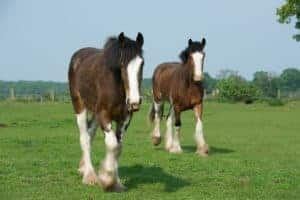Inclines, Declines, and Horse Energy Exertion

Does the same hold true for horses? James H. Jones, DVM, PhD, and his colleagues from the Japan Racing Association recently tried to answer this question by studying the cardiorespiratory responses of five Thoroughbreds as they worked on a treadmill set to varying speeds as well as degrees of incline and decline. They measured stride frequency, stride length, and cardiopulmonary and oxygen variables to determine how much energy the horses were exerting.
“Our hypothesis had been that the energy savings going downhill would be equal, but opposite of the energy cost going uphill,” he said.
However, the team found that “the amount of energy it took for a horse to travel downhill was only half of the energy used to go uphill,” Jones said. “This difference may be due to the eccentric contractions of the muscles reducing the cost of downhill locomotion
Create a free account with TheHorse.com to view this content.
TheHorse.com is home to thousands of free articles about horse health care. In order to access some of our exclusive free content, you must be signed into TheHorse.com.
Start your free account today!
Already have an account?
and continue reading.

Related Articles
Stay on top of the most recent Horse Health news with

















